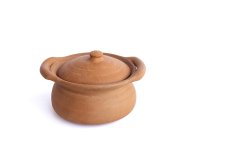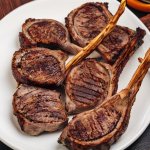kosta_karapinotis
Active member
I am learning how to do some clay pot cooking. I am gathering information about it:
Clay pot cooking is a method of cooking that uses a clay pot to slowly cook food. This technique is highly popular in Greece since it helps to preserve the flavors and aromas of the food. The gyuvetchi is a unique, bell-shaped clay pot that's traditionally used in Greek clay pot cooking. Clay pot cooking has been around in Greece for over 2,500 years, and it remains an integral part of Greek cuisine.
One dish that's popularly made using the gyuvetchi is "kleftiko," which is lamb or goat meat slow-cooked in the clay pot. The gyuvetchi is also used to make "stifado," a beef stew that's cooked in onion and red wine. Vegetables like potatoes and zucchini are commonly used in this cooking method to create delicious and healthy meals. In Greece, the use of fresh herbs like oregano, thyme, and rosemary is a must when cooking with a gyuvetchi. The heat from the clay pot releases the essential oils in the herbs, which enhances the flavor of the dish.
Clay pot cooking is not just delicious. It's also considered to be a healthier way of cooking since it doesn't require oil or additional fat. Instead, the meat and vegetables are cooked in their own juices, resulting in a dish that's rich in nutrients. Additionally, the clay pot retains the heat, which keeps the food warm and also has a positive impact on the end result. The clay pot distributes heat evenly throughout the pot, which gives the food a unique texture that's hard to replicate with any other cooking method.
So, I will buy a clay pot from Amazon or somewhere else, if I can find it online. I tried looking in the stores, and I dint find anything suitable. Does the vessel look like this?

Clay pot cooking is a method of cooking that uses a clay pot to slowly cook food. This technique is highly popular in Greece since it helps to preserve the flavors and aromas of the food. The gyuvetchi is a unique, bell-shaped clay pot that's traditionally used in Greek clay pot cooking. Clay pot cooking has been around in Greece for over 2,500 years, and it remains an integral part of Greek cuisine.
One dish that's popularly made using the gyuvetchi is "kleftiko," which is lamb or goat meat slow-cooked in the clay pot. The gyuvetchi is also used to make "stifado," a beef stew that's cooked in onion and red wine. Vegetables like potatoes and zucchini are commonly used in this cooking method to create delicious and healthy meals. In Greece, the use of fresh herbs like oregano, thyme, and rosemary is a must when cooking with a gyuvetchi. The heat from the clay pot releases the essential oils in the herbs, which enhances the flavor of the dish.
Clay pot cooking is not just delicious. It's also considered to be a healthier way of cooking since it doesn't require oil or additional fat. Instead, the meat and vegetables are cooked in their own juices, resulting in a dish that's rich in nutrients. Additionally, the clay pot retains the heat, which keeps the food warm and also has a positive impact on the end result. The clay pot distributes heat evenly throughout the pot, which gives the food a unique texture that's hard to replicate with any other cooking method.
So, I will buy a clay pot from Amazon or somewhere else, if I can find it online. I tried looking in the stores, and I dint find anything suitable. Does the vessel look like this?





